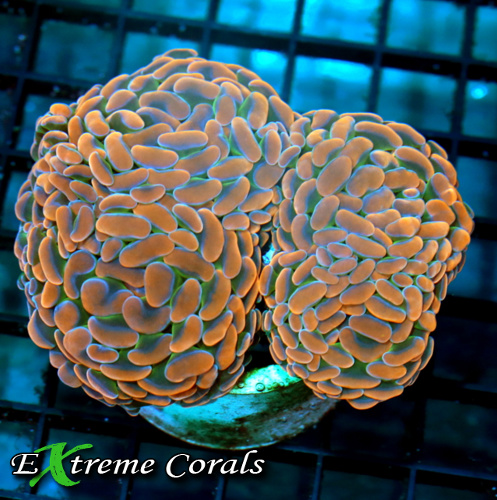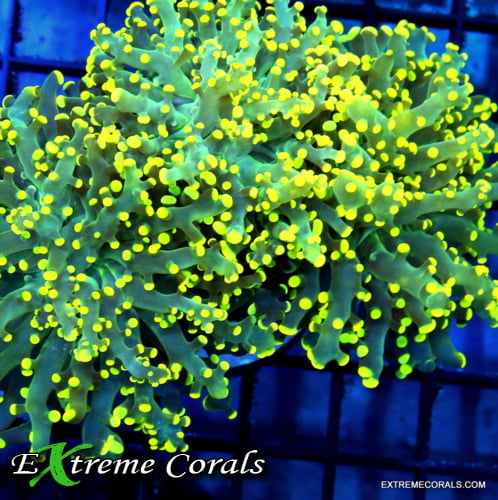Extreme Corals News and Updates
Frogspawn Corals vs. Other LPS Corals: Unveiling the Differences
Differentiate between frogspawn corals and other LPS corals in our detailed comparison 'Frogspawn Corals vs. Other LPS Corals: Understanding the Differences'.
Dive into the enchanting world of coral reefs to discover the unique characteristics of frogspawn corals. As we explore deeper, we’ll highlight what sets them apart from other Large Polyp Stony (LPS) corals. Get ready to immerse yourself in the vibrant and diverse realm of these fascinating marine organisms!
by scott Shiles • June 11, 2024
Discovering the Unique Traits of Frogspawn Corals

Frogspawn corals, scientifically known as Euphyllia divisa, captivate with their bulbous tentacles and striking colors. These captivating corals are part of the LPS group, characterized by their robust, calcareous skeletons that help build coral reefs. Frogspawn corals typically exhibit a spectrum of colors, from fluorescent green to pink and brown, adding a vibrant touch to the underwater landscape.
One of the most intriguing features of frogspawn corals is their polyp extension behavior. In optimal conditions, they extend their tentacles in a manner that resembles a cluster of frog eggs—hence their charming name. As night falls, these tentacles retract, giving the coral a distinct appearance that changes throughout the day. This rhythmic dance adds to their allure and mystique.
Beyond their visual appeal, frogspawn corals play a crucial role in reef ecosystems. They provide shelter and food for various marine organisms, enhancing the overall biodiversity of coral reefs. Their presence contributes to the health and resilience of the ecosystem, showcasing the interconnectedness of marine life.
Unique Features of Other LPS Corals
While frogspawn corals have their distinct charm, other LPS corals also boast unique traits that set them apart. Examples include the popular Torch Coral (Euphyllia glabrescens) and the elegant Hammer Coral (Euphyllia ancora). Each species displays its own mesmerizing beauty and ecological significance.

Torch Corals are known for their long, tubular bodies and tentacles that resemble a torch, creating a stunning visual display in reef aquariums. Their vibrant colors and swaying movements captivate observers, making them a favorite among coral enthusiasts.

Hammer Corals, on the other hand, have distinctive hammer-shaped tentacles that add an artistic touch to underwater landscapes.
While frogspawn corals showcase their unique polyp extension behavior, other LPS corals exhibit diverse feeding strategies and growth patterns. Understanding these variations provides insight into the intricate world of LPS corals and their roles in sustaining marine ecosystems.
Comparing Growth Patterns and Care Needs
Frogspawn corals and other LPS corals differ in their growth patterns and care requirements. Frogspawn corals typically form compact colonies with bulbous extensions, creating a visually striking display. In contrast, Torch and Hammer Corals develop elongated tentacles and unique shapes, adding diversity to coral reef environments.
In terms of care, frogspawn corals and other LPS corals thrive in well-maintained reef aquariums with stable water parameters and adequate lighting. Regular feeding with coral-specific nutrients supports their growth and vitality. By understanding the unique needs of each coral species, aquarists can create thriving underwater environments that showcase the beauty and diversity of LPS corals.
In the complex ecosystem of coral reefs, the diversity and dynamics of frogspawn corals bring vibrancy and wonder. By understanding how they differ from other LPS corals, we gain a deeper appreciation for the intricate beauty of these underwater spectacles.

